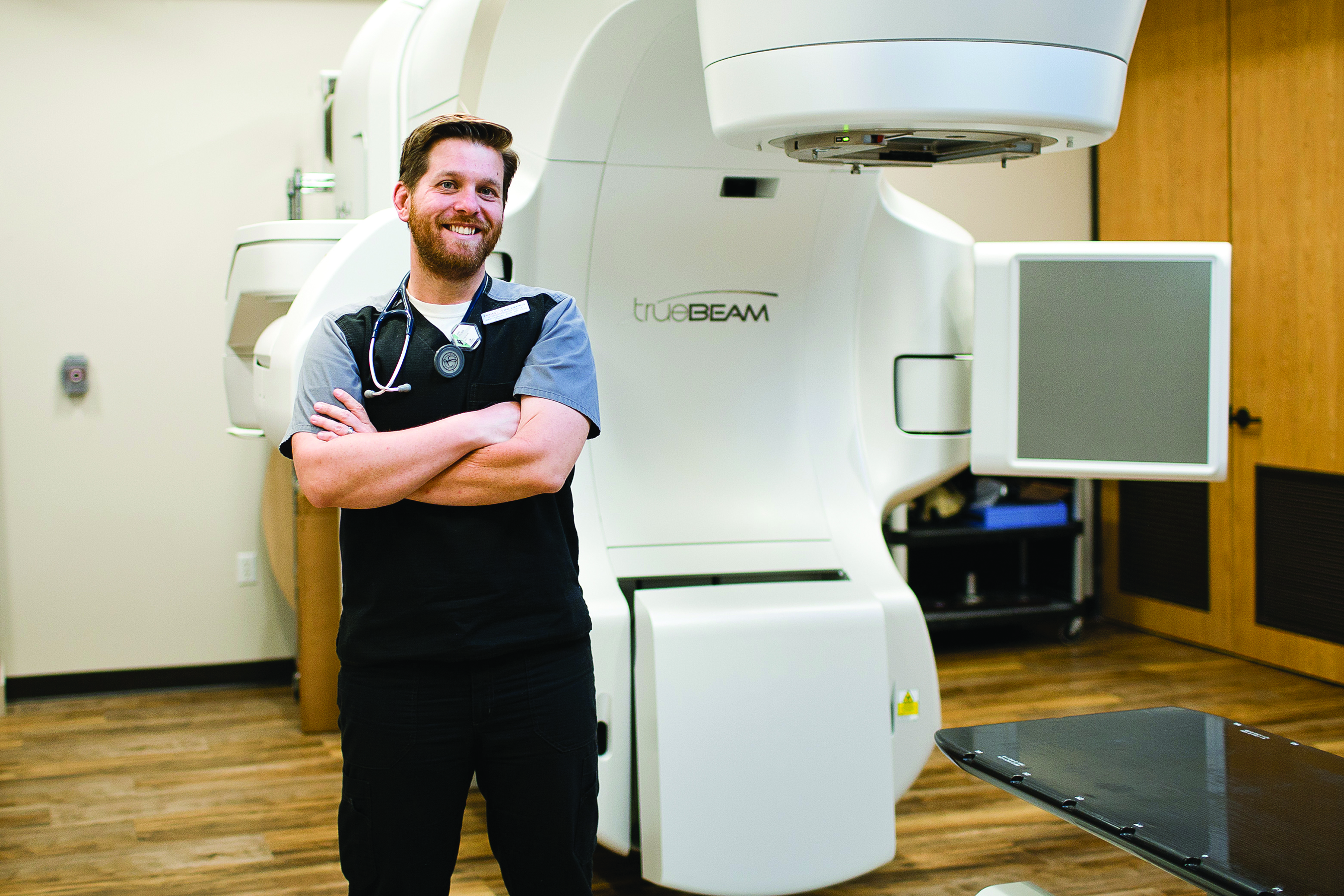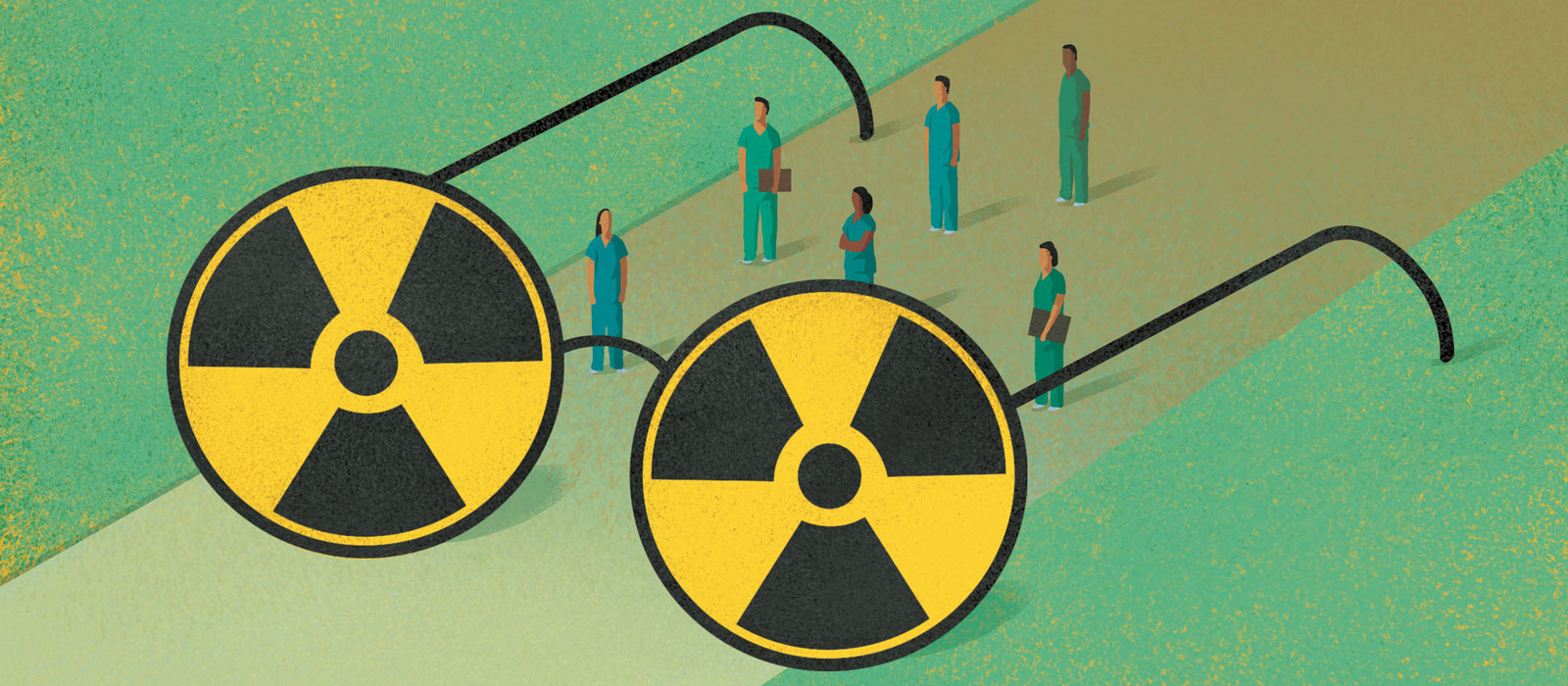Radiation has been used in health care and patient treatment since the turn of the 20th century. Originating from uncertain and crude beginnings, the understanding and development of radiation as a form of medical treatment has stretched over more than 120 years.
Advancements in science, technology, automation, and computing power have driven radiation therapies into a new age of cancer treatment and patient care. Gone are the days where scientists like Marie Curie and Henri Becquerel would expose themselves to radium to understand its effects. Radiation therapy exploded through the 20th century and into present-day oncology to encompass some of the most cutting-edge, successful treatments available for patients with cancer.
However, misconceptions about radiation treatments, associated side effects, and impact on patient care still permeate medical oncology for patients and providers alike. As educators, patient advocates, and caregivers, radiation oncology nurses play a critical role in the successful treatment and support of patients with cancer.

Supporting Patients Undergoing Radiation Treatments
Radiation oncology nurses are equipped with a specific subset of skills that allows them to address issues unique to radiation treatments. Beyond managing symptoms and addressing patient education, radiation nurses proactively seek to understand their patients’ medical history, susceptibility to treatment issues, and potential for radiation-specific adverse events.
ONS member Annette Quinn, RN, MSN, program manager of radiation oncology at the University of Pittsburgh Medical Center’s Hillman Cancer Center in Pennsylvania, notes the minutiae that nurses address when caring for patients undergoing radiation therapy.
“Using their knowledge of radiobiology and radiation principles, radiation oncology nurses determine patients most at risk for treatment-related side effects,” Quinn says. “They work with patients and physicians to develop an appropriate plan of care, providing psychosocial support throughout the course of treatment. Because of daily radiation treatments—coupled with restrictive immobilization devices—patients can develop disturbances in psychosocial function, and that’s managed by the nursing team.”

ONS member John Hollman, RN, BSN, radiation oncology nurse at Texas Oncology in Round Rock, explains that the role of the radiation oncology nurse is multifaceted, ranging from teacher to caregiver to support staff and beyond.
“Most radiation oncology nurses are in charge of new patient education, among other things,” Hollman says. “We see our patients five days a week, sometimes for up to two months straight, so ongoing education is a huge part of what we do. Of course, we’re responsible for side effect management, especially since we’re interacting face-to-face with our patients daily. We also have to recognize that our patients’ sole responsibilities are not just to come for treatment. They’re people too, and they have to work and have families. We guide them through those challenges too.”
Radiation oncology nurses’ pretreatment assessments can differ depending on patients, cancer variations, and treatment types. It’s up to nurses to dive into their patients’ medical history to prepare them for successful treatment.
“Every patient undergoes a pretreatment assessment by the radiation oncology nurse focusing on past medical history and review of symptoms, allergies, and current medications,” Quinn says. “A pretreatment assessment in radiation is significant because it determines aspects of a patient’s health that may affect precise treatment so they can be managed before simulation. For example, a patient with claustrophobia may have trouble with a mask, or a patient with rotator cuff issues may have difficulty keeping his arms above the head for treatment.”
Hollman says that pretreatment assessments are crucial for addressing patients’ fears and misunderstandings. It’s important to help them understand the technology and potential side effects, as well as how they can overcome barriers to their care.
“By looking into their history, I can get a good idea of our patients’ needs before they even step foot in our clinic,” Hollman says. “Once they arrive, we get a baseline and vital signs, and that gives us a good picture physically. After we’re in a room, I try to give them a quiet environment where they can discuss their fears. Most patients feel comfortable talking to a nurse about their radiation fears, and I help them understand that it isn’t like what they’ve heard—it’s not the 1950s or ’60s. I show them the latest technology and assure them that reactions and side effects are nowhere near what they used to be.”
Working Alongside Medical Oncology Nurses
With rapid advancements and changes to technology, providers who work outside of the radiation setting may not be familiar with the nuances of treatment and symptom management. Radiation nurses are working with their colleagues to eliminate the mystery.
“For those working outside of radiation, it’s easy to forget that side effects don’t often show up until days or weeks after treatment has begun,” Hollman says. “We also help patients and their providers understand that side effects may be present for weeks following the end of treatment. We work alongside our medical oncology nurse colleagues to handle those cases.”
Quinn and Hollman recognize the importance of open communication and teamwork between radiation and medical oncology. Discussing the treatment from both sides can help remove any mystery and get patients the care they need.
“Communication between medical oncology and radiation is crucial,” Quinn stresses. “With the advent of more precise radiation techniques, patients’ symptoms are often not a result of the radiation treatments. However, a lack of knowledge and communication between teams can often lead to misdiagnosing side effects and improper management. It’s important to remember that a large number of patients are undergoing combined modality care. A plan of care from medical oncology could be extremely beneficial. This would help radiation oncology nurses understand expected side effects, what’s being prescribed to manage them, and what the plan is for follow-up care.”
Quinn cites immunotherapy as an example of where communication is critical between medical and radiation oncology teams. Steroids are commonly prescribed in radiation oncology to help curtail inflammation, but they’re contraindicated in patients receiving certain immunotherapy treatments. Ensuring open communication for these patients is essential to achieving optimal outcomes.
Dispelling Myths and Misconceptions About Radiation
Educating patients and oncology colleagues about the radiation department is a vital ingredient to successful care coordination, Hollman and Quinn explain. Addressing misconceptions about treatment, schedules, and side effects is key.
“Without first-hand experience working in radiation oncology, it can be difficult to understand how everything functions,” Hollman says. “There are no more 5- or 10-minute treatments. With the technology we use, the margins are smaller than ever before. Getting patients situated and ready for treatment can take time. This means radiation schedules and chemotherapy schedules have to be coordinated to ensure everything stays on target.”
Quinn says that pre-existing radiation stereotypes are a barrier to understanding how modern radiation therapy works for patients with cancer.
“Technologic advancements in the field of radiation oncology have allowed for more precise treatments and less radiation to healthy tissue,” Quinn says. “Side-effect profiles that once existed for certain treatment areas are no longer seen. Stereotactic radiosurgery to the brain, for example, doesn’t lead to hair loss, which was once an expected side effect of brain radiation. Similarly, skin reactions are less dramatic with more focused treatment.”
Creating the Future of Radiation Oncology Nursing
As radiation continues to evolve, so too is the role of radiation nurses. Hollman and Quinn encourage their medical oncology nurse colleagues to pull on the experience and expertise of radiation nurses to stay up to date on new trends and treatments.
“Radiation oncology is just a completely different world,” Hollman says. “It’s a specialty and requires a unique skill set for nurses. Radiation oncology nurses can be a wealth of information to their medical oncology counterparts, so take advantage if you have questions, especially with new technologies. These machines are able to do amazing things, and it will be exciting to see what the next 5 or 10 years will bring.”
Quinn adds that advancements in medical oncology, such as immunotherapy, further underscore the need to work together.
“The integration of radiation oncology and immunotherapy is opening a whole new realm of collaboration between the medical oncology and radiation oncology teams,” Quinn notes. “The coordination of care, education, symptom management, and psychosocial support will continue to dominate the majority of radiation oncology nursing in the years to come.”






